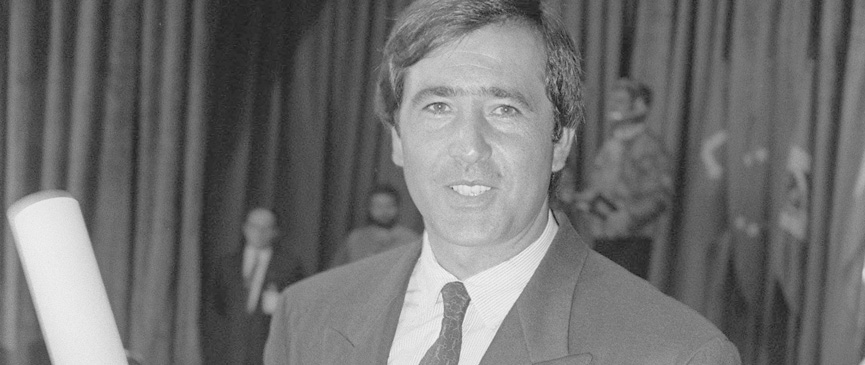You are in:
Laureates
Start of main content
Severiano Ballesteros
Prince of Asturias Award for Sports 1989

Severiano Ballesteros Sota (Pedreña, Cantabria, Spain, 1957 - 2011) is one of the most successful golf players the world has seen. Among other achievements, he won three Match Play world championships, two Masters Tournaments in Augusta and three British Opens. He had connections with golf from his childhood.
His uncle, Ramón Sota, was the Spanish champion of this sport and his father was a gardener at the Pedreña golf course, where Severiano made his debut as a caddie when only nine years old.
In 1974 Ballesteros obtained his professional qualification and in the same year won the National Under-25s Championship and the Vizcaya Open; he also took part in various European tournaments. In 1975 he repeated his victory in the Spanish Under-25 Open and was seeded 26 in the world ranking. Coming third in the Lancôme tournament meant his name began to be known on the circuits. At the age of 19, Severiano Ballesteros won various important trophies, among them, the Lancôme; the Dutch Open; the championships of Catalonia, Tenerife and All- Spain; the Donald Swaalens Memorial; and the World Championship, along with Manuel Piñero. He came second in The Open and received the prize for best European golfer of the year. The following year he began to enjoy great fame in the United States and Great Britain, thanks to his victories in the World Cup, the Japanese Open, the Pheonix Dunlop, the Otago Classic and the French and Swiss Opens. His great talent was acknowledges with the British Order of Merit.
In 1978, after a break due to military service, he was the winner of the Kenyan, Greensboro, German, Scandinavian, Swiss and Japanese Opens, the Martini International and the Spanish Under-25 Championship. In 1979 he triumphed in the Catalan Open, the English Classic and he became the youngest-ever winner of The Open. A year later, he gained another prestigious trophy, the Augusta Masters, rounding of his trophies that year with the Madrid and Dutch Opens and the Martini International.
The next season did not start off terribly well, but Severiano Ballestero managed to get on top of his game in the Spanish and Scandinavian Opens, the Australian PGA Championship, the Japanese Dunlop trophy and the World Match Play held in England. In 1982 he gained victories in the Madrid, French and San Remo Opens and the World Match play Championships. The following year he obtained the USA Masters, as well as the Lancôme, Westchester Classic, Sun Alliance PGA, and Sun City (South Africa) Challenge trophies, and the Irish Open.
In 1984 Ballesteros triumphed again in The Open, the Sun City Tournament and his third Match Play. In the 1985 season he tried to repeat his victory in Augusta, but had to make do with second place and with victory in the Spanish Championships, the Ryder Cup, and the New Orleans, Irish, French, Sanyo and Spanish Opens. The European Masters was his most important trophy in 1986, along with the Irish, Montecarlo, French and Dutch Opens, and the Lancome Trophy.
In 1987 he totalled four first places - the APG Larios, the Cannes Open, the Ryder Cup and the Spanish Professional Championship - and, in October, he presented, in Jerez, the first golf course designed of his own design, built in the town of Chiclana, in Cádiz. The Open was his again a year later; he also emerged victorious from the APG Larios, the Baleares, Harrison (USA), Scandinavian, German and Paris Opens, and the White and Mackay Champions Challenge Tournament. On the 13th November that year he took the Japanese Open.
Up to the time of writing, his most important recent victory has been in the 1989 European Masters.
End of main content
Sección de utilidades
Fin de la sección de utilidades
- Legal document Legal document (Access key 8)
- | Privacy policy Privacy policy (Access key )
- | Social networks ???en.portal.pie.menu107.title???
- | Cookies ???en.portal.pie.menu110.title???
- | Site map Site Map (Access key 3)
- | Contact Contact (Access key )
- | XHTML 1.0
- | CSS 2.1
- | WAI 'AA
© Copyright 2024. FUNDACIÓN PRINCESA DE ASTURIAS



